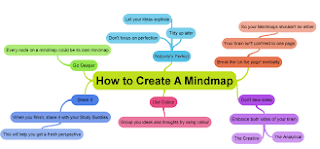Even though my students are young, they are kindergartners after all, it still follows that they are just like their older peers when it comes to having knowledge on a particular subject. Just like in any other grade, there are some students who for some reason or another have already mastered the subject the teacher is about to go over (in my case, they already know the alphabet). Then there are students who know a great deal about the subject (the alphabet) but have not mastered it yet. And then, there are the students who are learning about this subject (the alphabet) for the first time (more or less).
As mentioned above, my current unit for my Korean Kindergarten class is covering the alphabet, from A to Z. Surprisingly, some of my students have already mastered it! They not only know the whole alphabet, they know all the differences between uppercase and lowercase letters. The second group, knows the alphabet song and most of the letters, but there is still some room for improvement. The third group, either have no idea what "alien" writing they are looking at; or, they know a few letters here and there. As you can see, there is a vast gap between the groups.
But how did I come to these results? By using pre-assessment! As the word itself states, it is an assessment that is done before (thus the "pre" in the word) the subject is taught. There are many different ways to do pre-assessments. This particular time, I chose to use the Kahoot website to create a quiz (sample quiz in the link). (See references at the bottom for a link that provides 27 different ways to pre-assess your students.)
With a pre-assessment, I as a teacher, can see what is already known about the alphabet, how ready my students are for the new instruction they are about to receive, and more importantly, helps me to present the subject at appropriate levels for all my students. In other words, I am not trying to make sure my students are all on the "same page." Instead, I am trying to make sure I know what "page" THEY are on.
After the pre-assessment, as mentioned above, most students fall into one of three categories. For the sake of simplicity, I will label them: Advance, Intermediate, and Beginner. After going through their results, I will separate their scores into those three groups. I can then beginning my second step in preparing lessons for them. For this part I can use a mind map, such as this one (which I prepared specifically for this alphabet unit). This mind map can guide me in making my instruction.
Thanks to pre-assessments, I am able to not only help my students learn the alphabet, but I am better able to do it in a way that meets their needs.
References
5. Pre-assessment Ideas - Differentiation & LR Information for SAS Teachers. (2018). Sites.google.com. Retrieved 21 January 2018, from https://sites.google.com/site/lrtsas/differentiation/5-preassessment-ideas
27 Ways To Assess Background Knowledge. (2018). TeachThought. Retrieved 21 January 2018, from https://www.teachthought.com/pedagogy/27-ways-assess-background-knowledge/
As mentioned above, my current unit for my Korean Kindergarten class is covering the alphabet, from A to Z. Surprisingly, some of my students have already mastered it! They not only know the whole alphabet, they know all the differences between uppercase and lowercase letters. The second group, knows the alphabet song and most of the letters, but there is still some room for improvement. The third group, either have no idea what "alien" writing they are looking at; or, they know a few letters here and there. As you can see, there is a vast gap between the groups.
But how did I come to these results? By using pre-assessment! As the word itself states, it is an assessment that is done before (thus the "pre" in the word) the subject is taught. There are many different ways to do pre-assessments. This particular time, I chose to use the Kahoot website to create a quiz (sample quiz in the link). (See references at the bottom for a link that provides 27 different ways to pre-assess your students.)
With a pre-assessment, I as a teacher, can see what is already known about the alphabet, how ready my students are for the new instruction they are about to receive, and more importantly, helps me to present the subject at appropriate levels for all my students. In other words, I am not trying to make sure my students are all on the "same page." Instead, I am trying to make sure I know what "page" THEY are on.
After the pre-assessment, as mentioned above, most students fall into one of three categories. For the sake of simplicity, I will label them: Advance, Intermediate, and Beginner. After going through their results, I will separate their scores into those three groups. I can then beginning my second step in preparing lessons for them. For this part I can use a mind map, such as this one (which I prepared specifically for this alphabet unit). This mind map can guide me in making my instruction.
"Ok, these students are advanced, then they can do this and that. This group is beginners, ok, then I will be more involved with them, and they will do this and that."
Thanks to pre-assessments, I am able to not only help my students learn the alphabet, but I am better able to do it in a way that meets their needs.
References
5. Pre-assessment Ideas - Differentiation & LR Information for SAS Teachers. (2018). Sites.google.com. Retrieved 21 January 2018, from https://sites.google.com/site/lrtsas/differentiation/5-preassessment-ideas
27 Ways To Assess Background Knowledge. (2018). TeachThought. Retrieved 21 January 2018, from https://www.teachthought.com/pedagogy/27-ways-assess-background-knowledge/



No comments:
Post a Comment